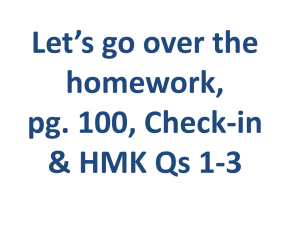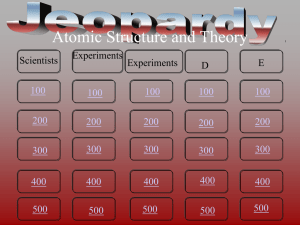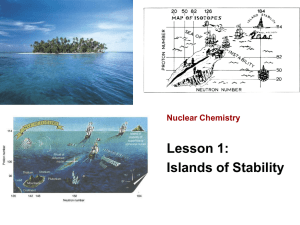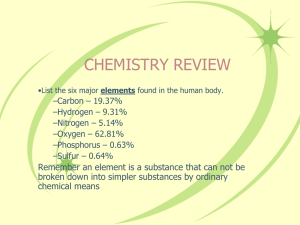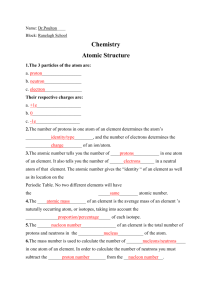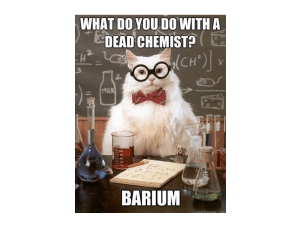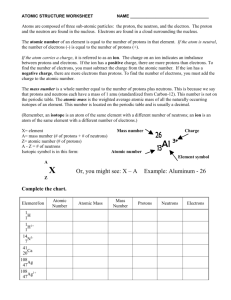Structure of the Atom Cornell Notes (pg
advertisement
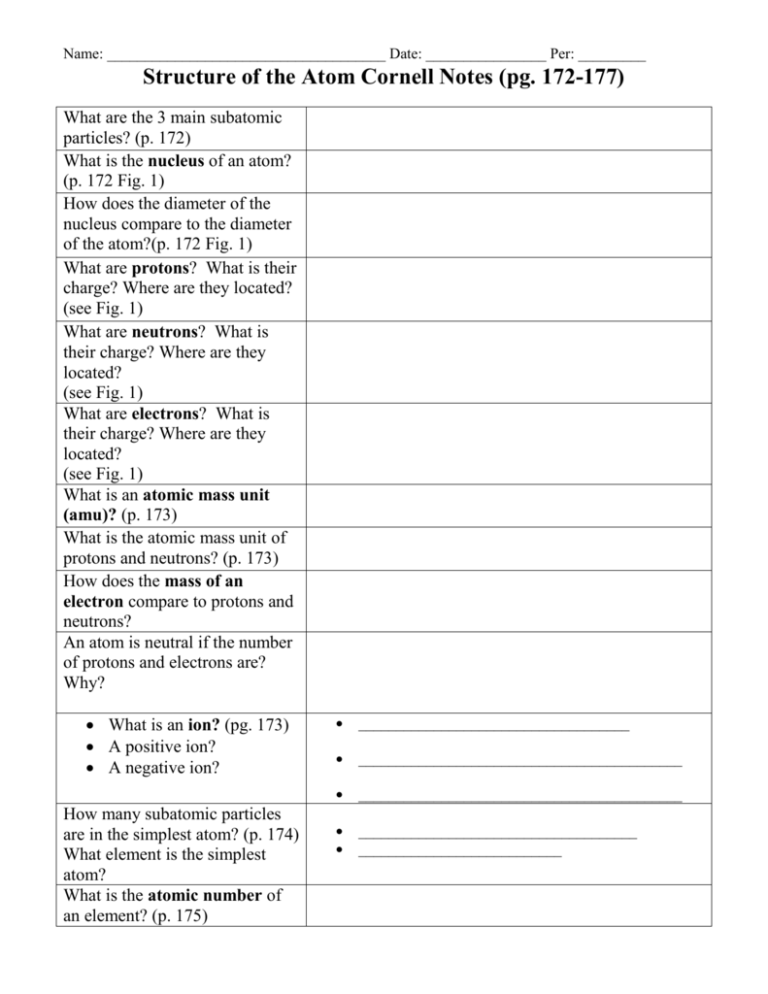
Name: _____________________________________ Date: ________________ Per: _________ Structure of the Atom Cornell Notes (pg. 172-177) What are the 3 main subatomic particles? (p. 172) What is the nucleus of an atom? (p. 172 Fig. 1) How does the diameter of the nucleus compare to the diameter of the atom?(p. 172 Fig. 1) What are protons? What is their charge? Where are they located? (see Fig. 1) What are neutrons? What is their charge? Where are they located? (see Fig. 1) What are electrons? What is their charge? Where are they located? (see Fig. 1) What is an atomic mass unit (amu)? (p. 173) What is the atomic mass unit of protons and neutrons? (p. 173) How does the mass of an electron compare to protons and neutrons? An atom is neutral if the number of protons and electrons are? Why? What is an ion? (pg. 173) A positive ion? A negative ion? How many subatomic particles are in the simplest atom? (p. 174) What element is the simplest atom? What is the atomic number of an element? (p. 175) ____________________________________ ___________________________________________ ___________________________________________ _____________________________________ ___________________________ Name: _____________________________________ Date: ________________ Per: _________ What is the atomic number of carbon? Iron? (see periodic table) What is an isotope? (p.175) Some isotopes are radioactive. What is a radioactive atom? (p. 176) What is the mass number? Why aren’t electrons included in the mass number?(p. 176) How do you write the name of a specific isotope? (p. 177) __________________________________________ __________________________________________ __________________________________________ ________________________________________ ________________________________________ _________________________________________ _________________________________________ What is the difference between C-12 and C-14? (p. 177) The mass number of sodium is 23. How many protons and neutrons does it have? (p. 177) What is atomic mass? Using copper isotopes as an example explain why this not always a whole number? Summary: Make an Atom Foldable to attach to these notes as your summary. Refer to the directions below. 1. Place your paper in a landscape position - fold in half. 2. Cut three flaps and label them “Proton” Neutron” and “Electron”. 3. Under Proton draw a Boron nucleus (B-10) and 5 electrons (see Fig. 5 p.176). Label or color-code the protons and indicate their number. 4. Under Neutron draw the B-11 isotope. Color-code the Neutrons and indicate their number. (See Fig. 5) 5. Under Electron draw a Carbon atom (C-12) and use arrows to indicate or label the electrons. (see Fig. 5 p. 176) Name: _____________________________________ Date: ________________ Per: _________ 6. Under the Proton flap write bullets of all facts from your notes about protons (see example on the board). Also include any definitions like Atomic Number and Mass Number because they refer to protons in their definitions. 7. Under Neutrons write bullets of all facts from your notes about neutrons. Remember to also include definitions like Mass Number and Isotopes because they refer to Neutrons. 8. Under Electrons write bullets of all facts from your notes about electrons. Remember to also define ions because they occur if the number of electrons is greater or less than the number of protons in an atom.


